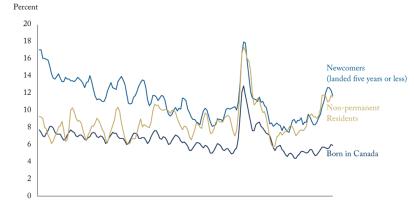In response to COVID-19, a number of countries have established job retention schemes to preserve as many existing jobs as possible or expanded unemployment insurance to compensate those who lost their jobs. Canada in particular employed both approaches, by establishing the Canada Emergency Wage Subsidy (CEWS) scheme and the Canada Emergency Response Benefit (CERB) paying $2,000 a month to laid-off workers.
In this edition of Graphic Intelligence, we show the percent of the workforce covered by job retention schemes and changes in unemployment in selected OECD countries between early March and the end of May 2020. The plot shows typically smaller increases in unemployment in countries with a larger number of applications for these emergency programs. This suggests that, at least in the short term, job retention schemes have been effective in limiting increases in unemployment.
Canada has experienced a fairly large increase in unemployment, which may reflect the fact that CEWS uptake, though not insignificant, has so far been far less substantial than CERB.
A rapid return to work will require strengthening financial incentives for workers and firms. In Canada, this could be achieved by gradually reducing the generosity of the CERB while temporarily expanding the Canada Workers Benefit, a refundable tax credit that complements earnings for low-income earners and rises as they earn more. As well, the government could phase out the full refund of employer social security contributions for complete employee furloughs in the CEWS.
To learn more about different job retention schemes and their impact on the labour market, see “Supporting Incomes While Promoting a Speedy Labour Market Recovery,” by Cyrille Schwellnus and Michael Koelle.





